Giant’s Causeway
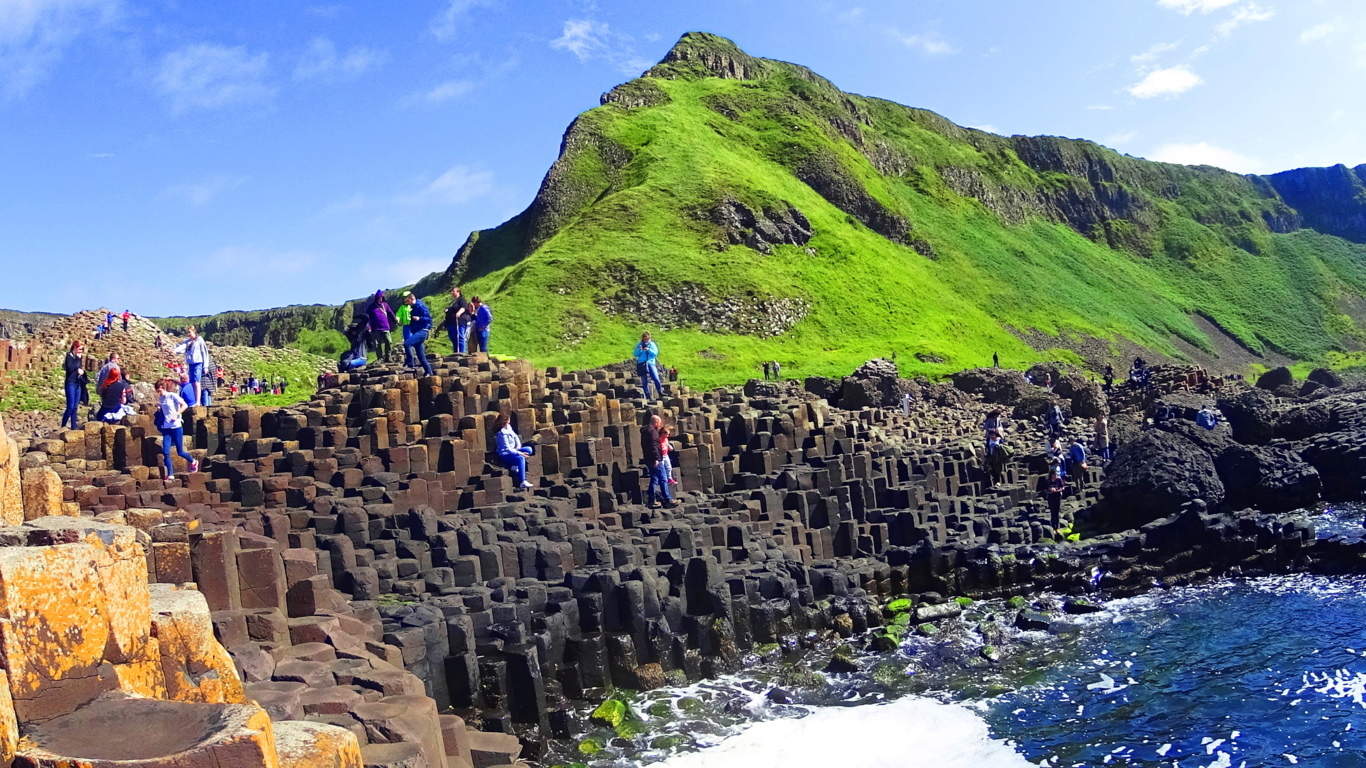 Location: Hamlet of Bushmills/County Antrim/Northern Ireland/(U.K)
Location: Hamlet of Bushmills/County Antrim/Northern Ireland/(U.K)
Note: Every so often a place emerges for trailblazers that is so mysterious, so utterly stunning, that a reactionary discussion is unavoidable. The simplest question emerges: “How did this happen?” Welcome to The Giant’s Causeway, the slightly golden, hexagonal stone courtyard on the absolute northernmost coastal point of the Emerald Isle. This is a gorgeous coastal trail, of roughly five amazing miles, that slowly elevates and bends around two gorgeous bays which cinematically ensconce one of the most mysterious sacred sites in the world.
Scientific Theories: The landscape of Ireland is not just a minor variation from the nearby nations of England, Scotland, and France, just across the Irish Sea; it is distinctly different. Take a look at the image above, along the bay of The Giant’s Causeway; the green coastline emerges like a Jurassic jade stone. It’s breathtaking. How does a landscape like this happen? How did Ireland happen? The answers come from all sides, and each is more challenging than the next. The author J.P Mallory in his book ‘The Origins of The Irish’ attributes Ireland’s unique glowing ‘green-colored-universe’ to the primordial history of it’s formation in the earliest periods of geological history. Get ready for this: Once upon a time, believe it or not, just after the breaking-up of the singular Pangaea Continent, Ireland was actually off the coast of… Australia.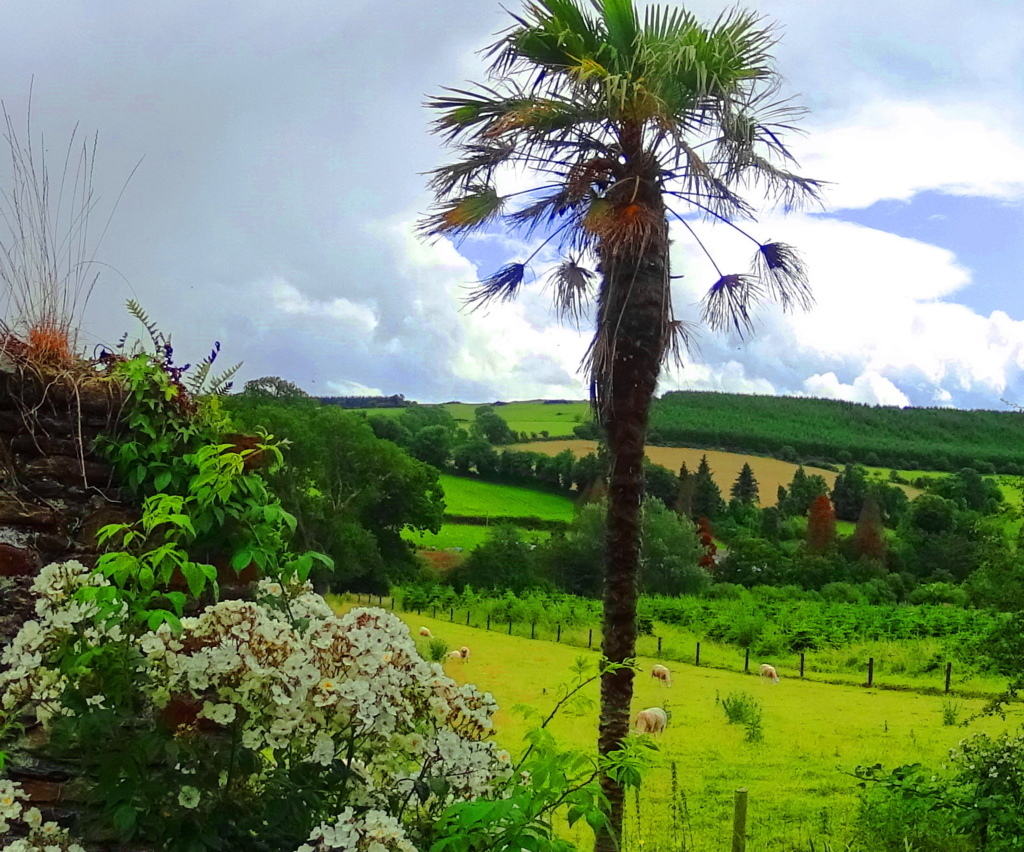 Ireland’s earliest tropical attributes come from this region. In an oversimplified explanation, Ireland slowly made its way (in what is scientifically called the ‘Ordovician Period‘) through extreme Ice Ages, Floods, and drastic Continental shifts, to reside at its preset position. That’s what scientists believe. Adding to that initial tropical origin, Ireland is at the glorious finish-line of the Atlantic Jet Stream, which is the warmest and largest tropical under-water-highway in the world, literally running from Jamaica to Ireland in it’s final phase. As result, Ireland’s southern coast (and England’s) is subtly marinated with Palm trees, something many people just don’t know. While hiking through Ireland you can easily begin to wonder what the actual story of this landscape is?
Ireland’s earliest tropical attributes come from this region. In an oversimplified explanation, Ireland slowly made its way (in what is scientifically called the ‘Ordovician Period‘) through extreme Ice Ages, Floods, and drastic Continental shifts, to reside at its preset position. That’s what scientists believe. Adding to that initial tropical origin, Ireland is at the glorious finish-line of the Atlantic Jet Stream, which is the warmest and largest tropical under-water-highway in the world, literally running from Jamaica to Ireland in it’s final phase. As result, Ireland’s southern coast (and England’s) is subtly marinated with Palm trees, something many people just don’t know. While hiking through Ireland you can easily begin to wonder what the actual story of this landscape is?
History and Religious Myth: It is hard to accept a theory that has Ireland’s earliest origin off the coast of Australia, but the uniqueness of Ireland’s semi-tropical south, and ‘thousand shades of green’, indicate something special. As noted before on Stonestrider.com, once, while hiking Kinnitty Mountain in the landlocked heart of Ireland, I found seashells on the mountain trail, about 2200 feet above sea level.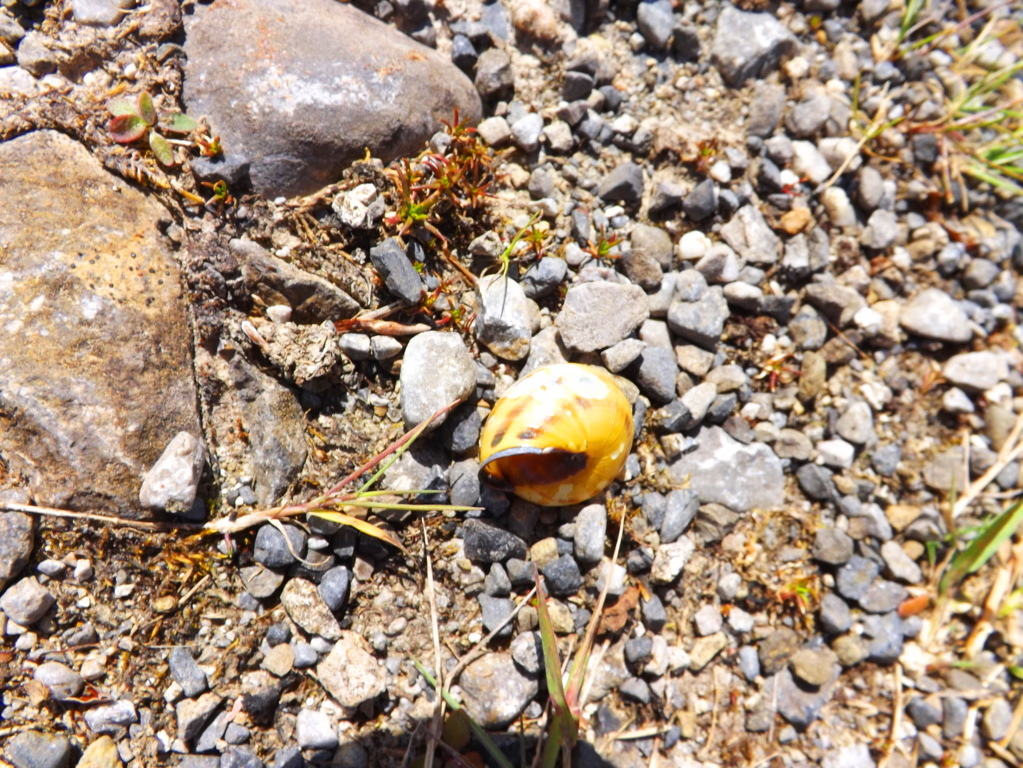 What were seashells doing at the top of a mountain? Ireland must have been covered by the ocean at one point or another, just as other landmasses, for this to happen; and more directly, this evidence would point to the last time it happened, meaning the Biblical Flood. For some people this is also hard to reconcile, and yet it is hardly less realistic than a theory transporting Ireland from the coast of Australia. To this point, in the southwest of Ireland, there is a magical view of the Gap of Dunloe from the N71 Road, that is so spongy, so filled with undulating vegetation, that picturing it at the bottom of the ocean seems uniquely possible. (Image/Below)
What were seashells doing at the top of a mountain? Ireland must have been covered by the ocean at one point or another, just as other landmasses, for this to happen; and more directly, this evidence would point to the last time it happened, meaning the Biblical Flood. For some people this is also hard to reconcile, and yet it is hardly less realistic than a theory transporting Ireland from the coast of Australia. To this point, in the southwest of Ireland, there is a magical view of the Gap of Dunloe from the N71 Road, that is so spongy, so filled with undulating vegetation, that picturing it at the bottom of the ocean seems uniquely possible. (Image/Below) 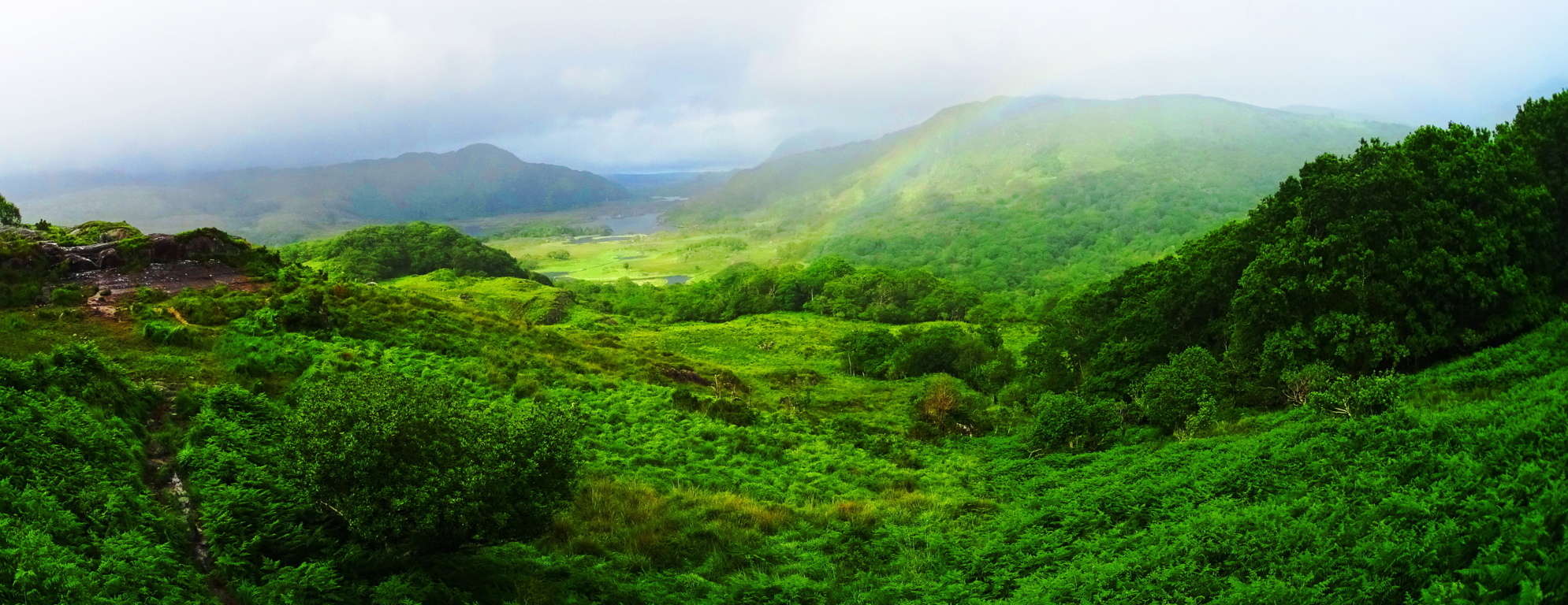 Like shells on mountaintops, or Palm trees growing in a northern European nation, The Causeway’ contains features that are compelling, and require some secondary consideration, to say the least. The first and most obvious of the features here are the small, but dense, golden hexagonal stone pillars lining this brilliant coastal cove.
Like shells on mountaintops, or Palm trees growing in a northern European nation, The Causeway’ contains features that are compelling, and require some secondary consideration, to say the least. The first and most obvious of the features here are the small, but dense, golden hexagonal stone pillars lining this brilliant coastal cove.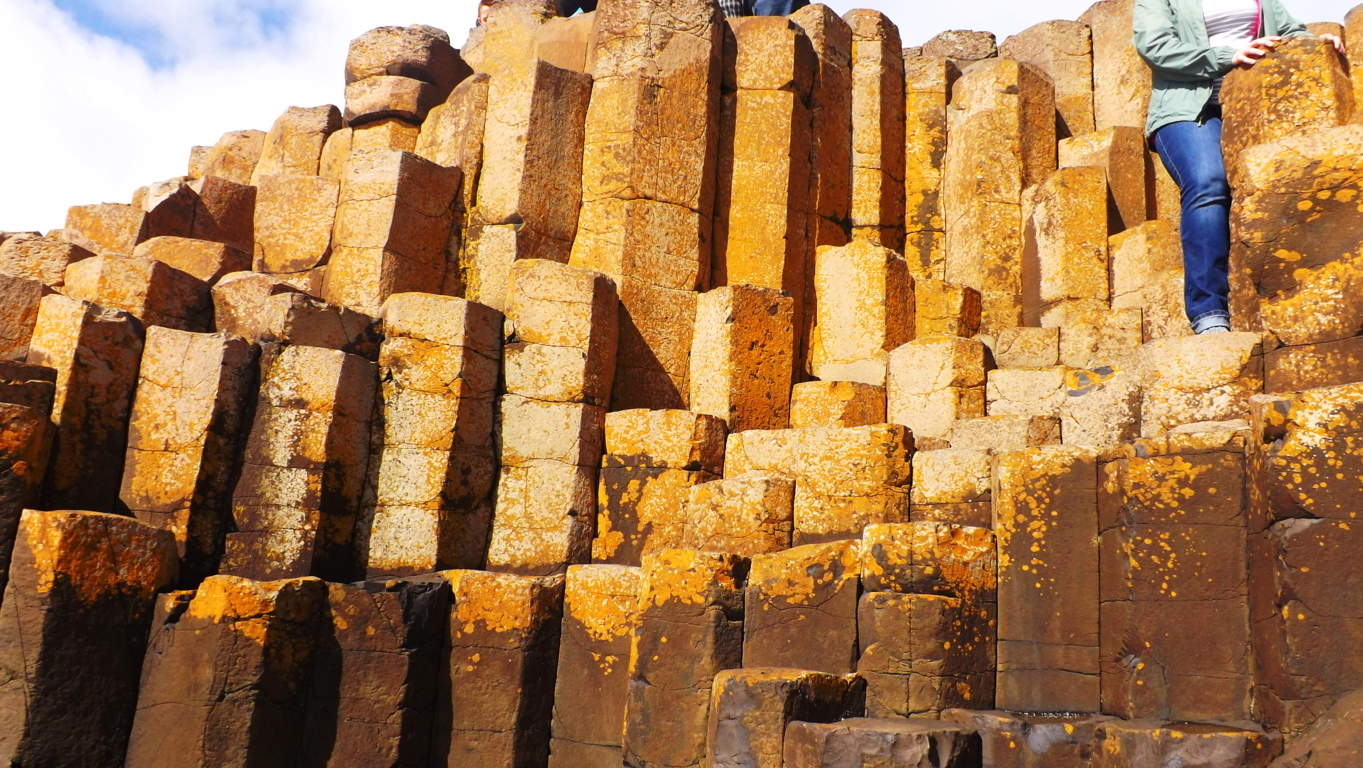 School-Age textbooks attribute the geometry of these stones to a process of volcanic lava being cooled and shaped by the ocean some 40 million years ago. For an impressionable ten year old child reading a fancy textbook this explanation might seem o.k, but for an educated, sentient adult, aware of logic and context, the explanation is almost insulting. Simply put, there are so many problems with the accepted theory. For example, in Hawaii this process of “lava cooling” is still taking place in real-time, and yet there is not a single hexagonal to be found. In fact, the lava-solids in Hawaii looks exactly as you would think; like grand layers of “syrup” slowly solidated into large round bulges of stone. These are strangely different results for two coastlines undergoing the exact same process. (Giant’s Causeway Hexagonals/Image/Below)
School-Age textbooks attribute the geometry of these stones to a process of volcanic lava being cooled and shaped by the ocean some 40 million years ago. For an impressionable ten year old child reading a fancy textbook this explanation might seem o.k, but for an educated, sentient adult, aware of logic and context, the explanation is almost insulting. Simply put, there are so many problems with the accepted theory. For example, in Hawaii this process of “lava cooling” is still taking place in real-time, and yet there is not a single hexagonal to be found. In fact, the lava-solids in Hawaii looks exactly as you would think; like grand layers of “syrup” slowly solidated into large round bulges of stone. These are strangely different results for two coastlines undergoing the exact same process. (Giant’s Causeway Hexagonals/Image/Below)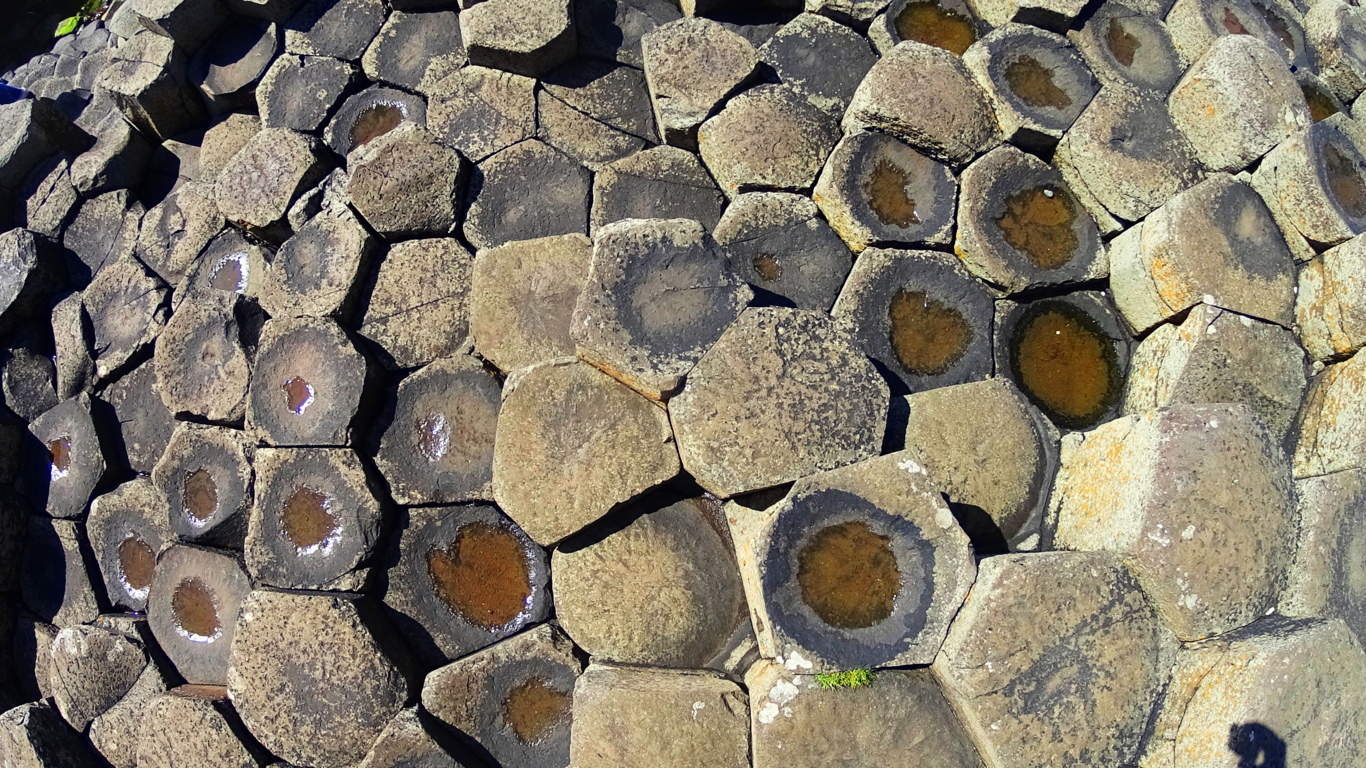 Furthermore, there are no hexagonals to be found anywhere else along the coast of Ireland; not a single one. That just doesn’t make sense for such a small national coast. There is also the apparently miraculous geographic placement of The Causeway’, set like a perfect northern gateway into Ireland from Scotland, which isn’t even 70 miles north across the inner Atlantic bay. It’s as if the area says: “Welcome to our side of the Sea”; a striking entry zone specifically facing the only other international land mass in the vicinity, Scotland/Wales.
Furthermore, there are no hexagonals to be found anywhere else along the coast of Ireland; not a single one. That just doesn’t make sense for such a small national coast. There is also the apparently miraculous geographic placement of The Causeway’, set like a perfect northern gateway into Ireland from Scotland, which isn’t even 70 miles north across the inner Atlantic bay. It’s as if the area says: “Welcome to our side of the Sea”; a striking entry zone specifically facing the only other international land mass in the vicinity, Scotland/Wales.
View From The Trail: As you might expect from a World Heritage Site, at the beginning of the trail is a busy commercial station and parking lot that requires payment. There is even a small bus line that will take physically challenged people to the The Causeway’. Don’t use the bus-line. Walk the 200 dramatic yards down the small road to the actual trail. From here the first full vantage of the northeasterly coastline pathway appears, and it couldn’t be more inviting. In the Sun, this scene looks like a Celtic northern California.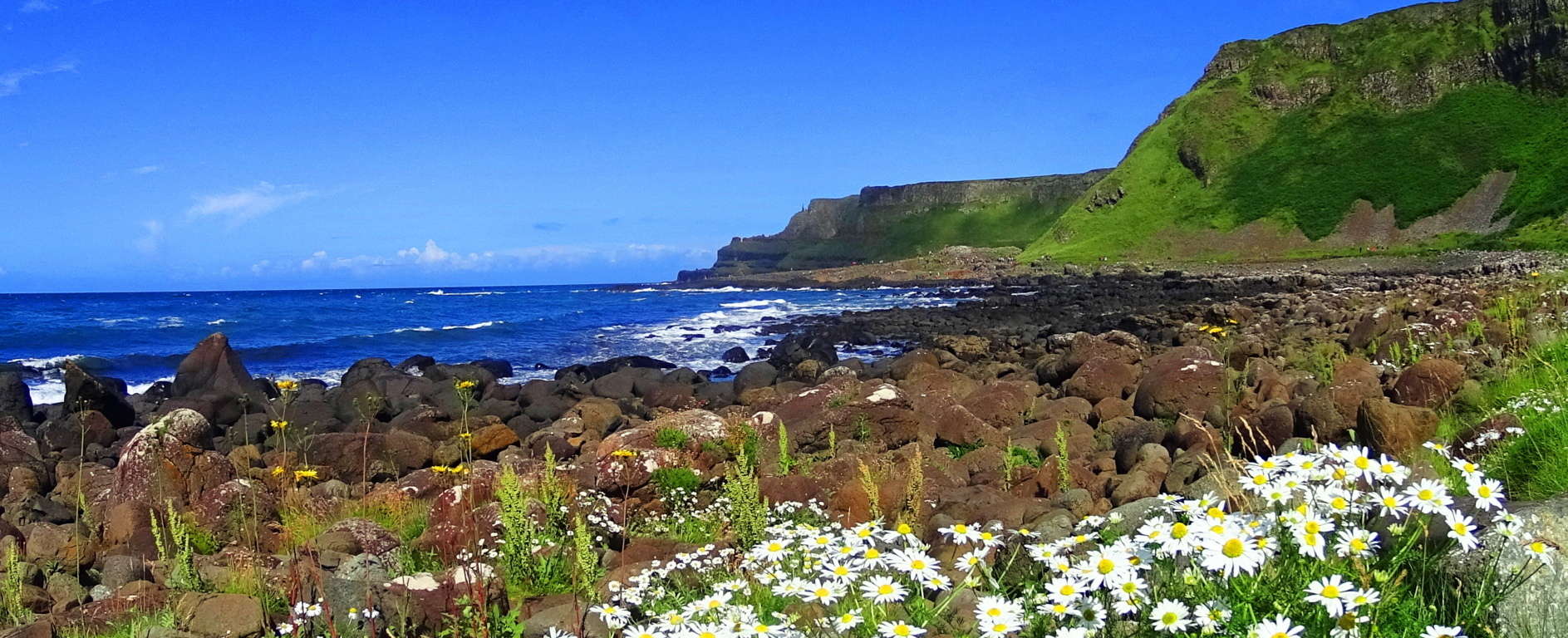
In this initial bay, before even arriving at the mysterious Causeway’, are massive stones and boulders that seem to have some kind of secret. Many of the large shapely boulders have names, and are famous in the area for their form (Image/Below). 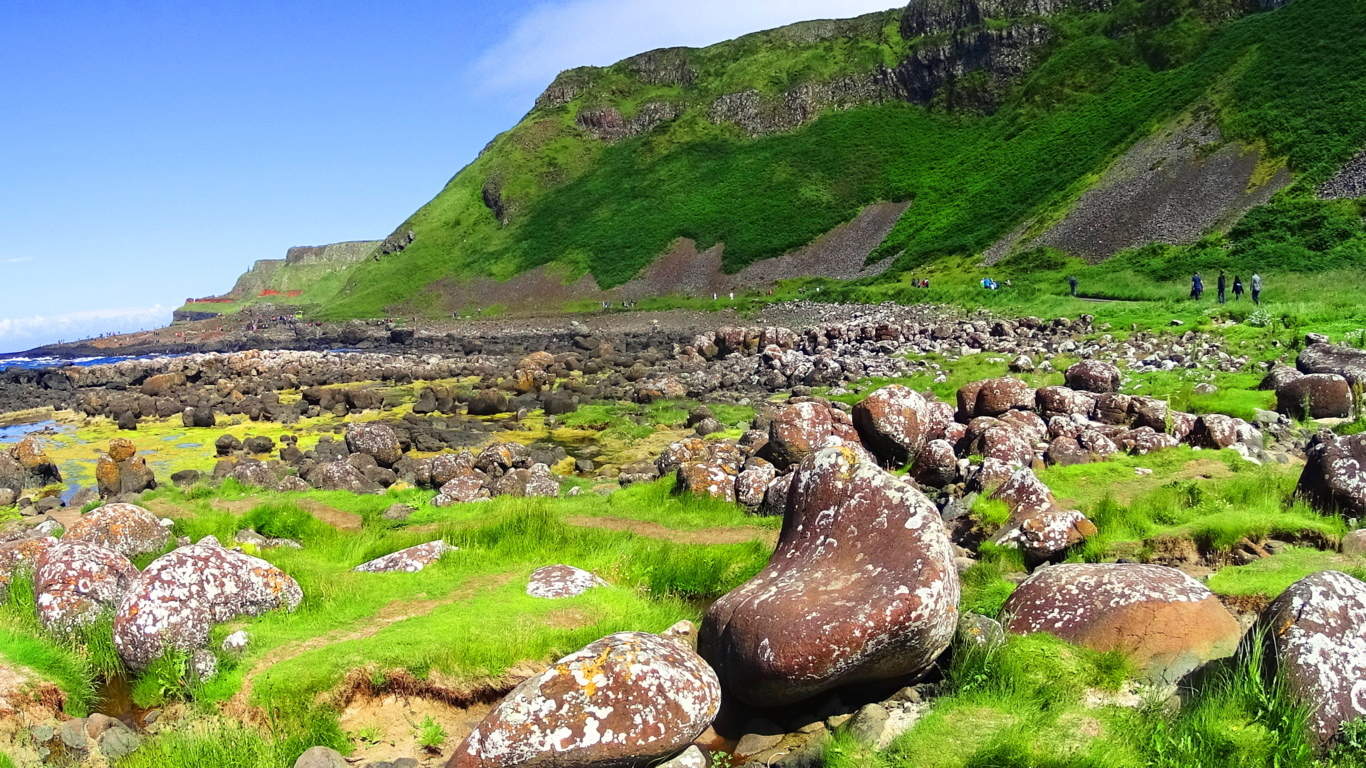 There are stones look to have been placed specifically as seats, with brilliant curvatures and character. Other stones are more stoic and classic in stature, looking like legitimate standing stones (Image/Below), fixed squarely into the rock beneath them. The entirety of this rocky opening scene, before arriving at the Causeway paints a picture of a ‘rock garden’ that reveals a small taste of the striking geomorphic strangeness taking place here.
There are stones look to have been placed specifically as seats, with brilliant curvatures and character. Other stones are more stoic and classic in stature, looking like legitimate standing stones (Image/Below), fixed squarely into the rock beneath them. The entirety of this rocky opening scene, before arriving at the Causeway paints a picture of a ‘rock garden’ that reveals a small taste of the striking geomorphic strangeness taking place here.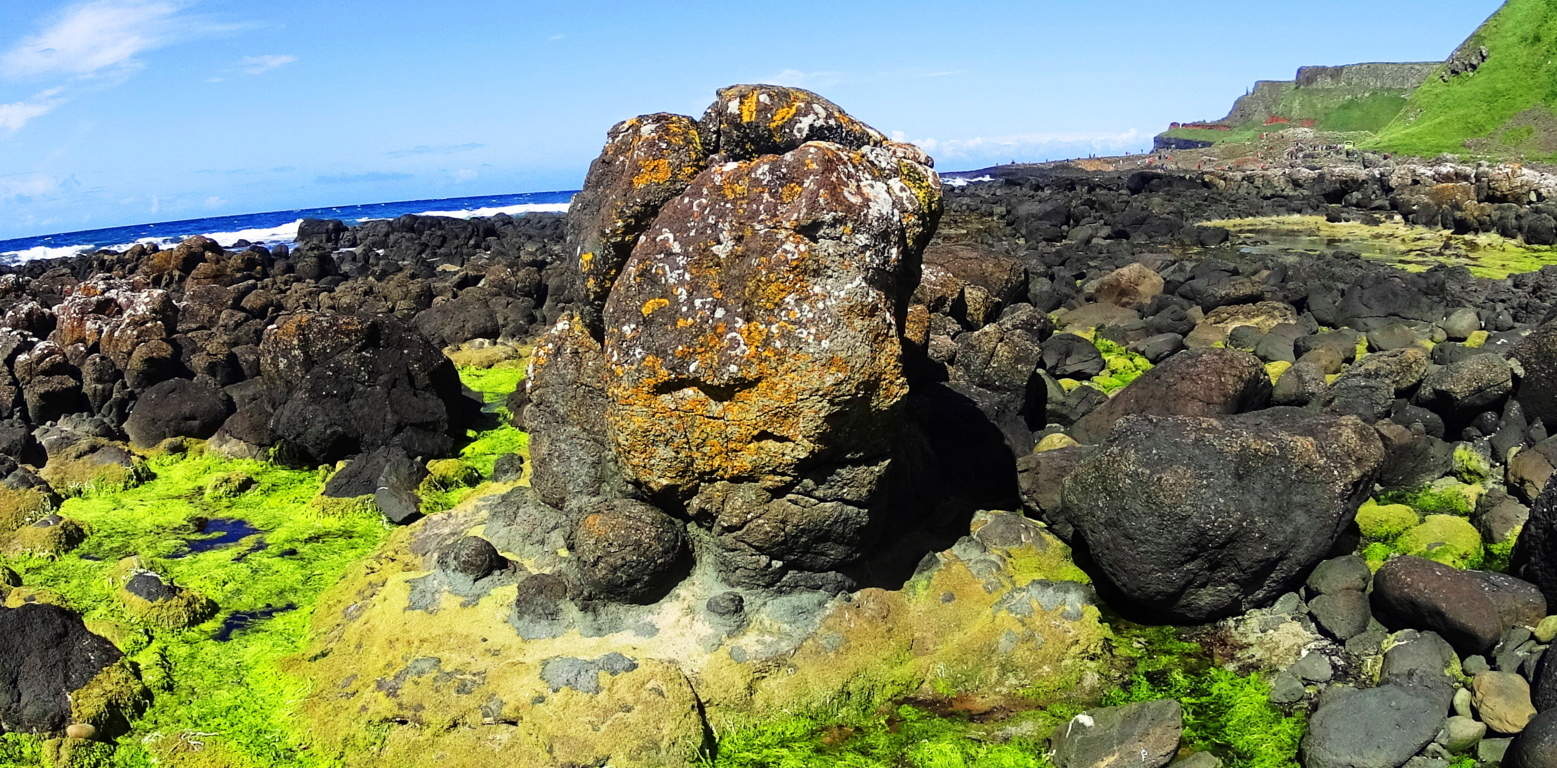 Continuing eastward along the trail the Causeway’ emerges, and not without what looks like playfully designed characteristics. At first glance, the leveling of the hexagonal stones in certain areas, combined with the orientation of this circular stone enclosure, give the impression that it was once perfectly carved-out to face the Sun, all while encapsulating water in a small protected ‘hot tub’ type space (Image/Below).
Continuing eastward along the trail the Causeway’ emerges, and not without what looks like playfully designed characteristics. At first glance, the leveling of the hexagonal stones in certain areas, combined with the orientation of this circular stone enclosure, give the impression that it was once perfectly carved-out to face the Sun, all while encapsulating water in a small protected ‘hot tub’ type space (Image/Below).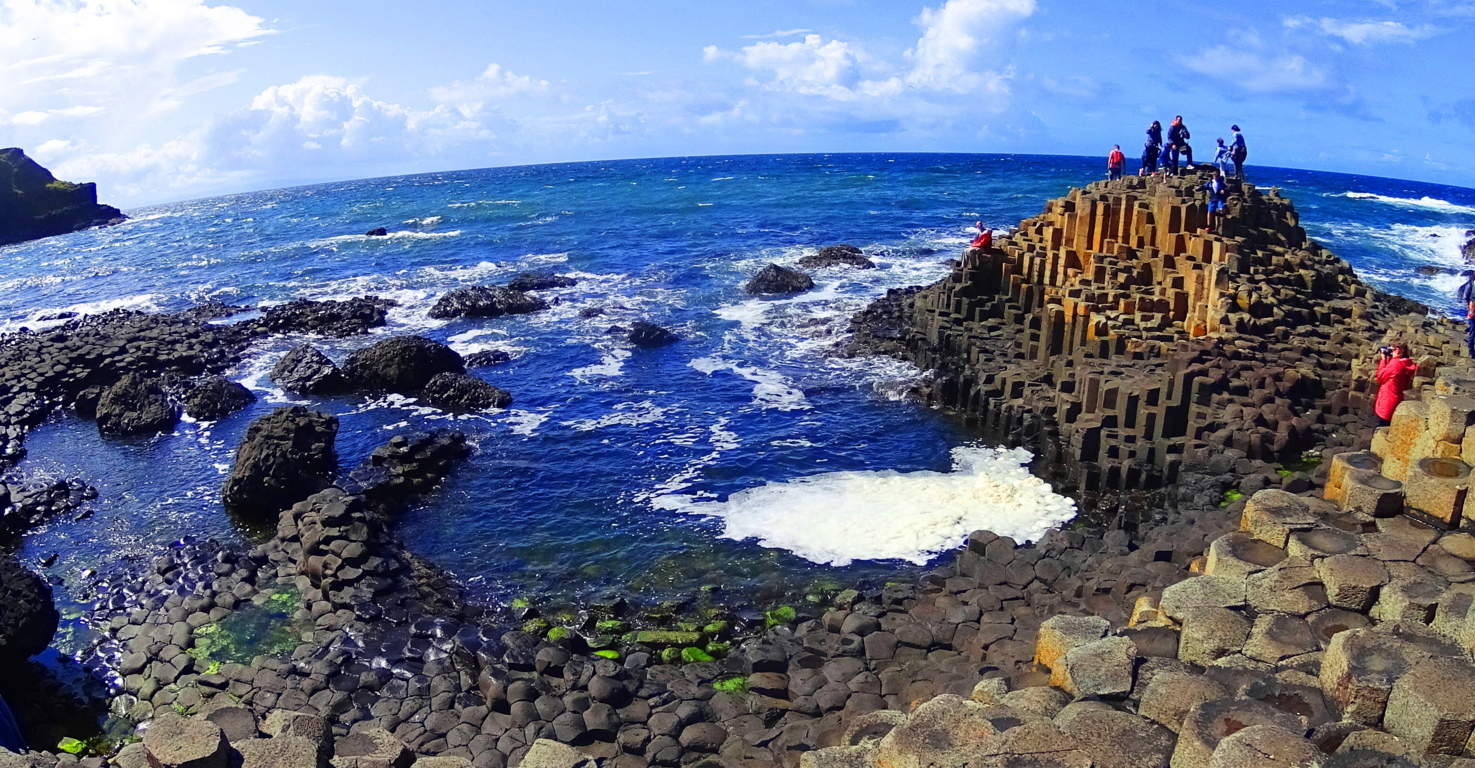 Taking a seat on the stones while the Sun shines overhead absolutely creates the feeling of a Spa. The area feels entirely functional and intentional, like many Neolithic places along waterfalls and mountainsides in New England, Wales, Scotland, and England. Continuing on the trail will bring you through a hexagonal stone gate, over a small hill, and then up the coastal path you go. As you begin the minor incline upward, yet another lessor-written-about feature is embedded perfectly into the coastal mountain face, and in only one specific area. How did lava quarry-out a perfectly squared set of evenly sectioned and leveled hexagonal stones inside the mountain? Why does the stone directly above these towering hexagonal shafts remain regular? Wouldn’t these stones have absolutely been affected by this magical lava flow which seems to pick and choose, even organize, specific sections of the coast for influence? Wouldn’t these shafts be spread at random, all over the scene, for miles perhaps? It just doesn’t make sense. And of course, these shafts are not published and written about in so many text books. Why? Because the logical questions they raise are too free of the authority of those who write the textbooks. Academics know that most of us will never see this place for ourselves. Stonestrider.com exists to inspire hikers, humble or affluent, to break through the paradigm and expectations of the individuals who are re-writing our histories, and see for themselves.
Taking a seat on the stones while the Sun shines overhead absolutely creates the feeling of a Spa. The area feels entirely functional and intentional, like many Neolithic places along waterfalls and mountainsides in New England, Wales, Scotland, and England. Continuing on the trail will bring you through a hexagonal stone gate, over a small hill, and then up the coastal path you go. As you begin the minor incline upward, yet another lessor-written-about feature is embedded perfectly into the coastal mountain face, and in only one specific area. How did lava quarry-out a perfectly squared set of evenly sectioned and leveled hexagonal stones inside the mountain? Why does the stone directly above these towering hexagonal shafts remain regular? Wouldn’t these stones have absolutely been affected by this magical lava flow which seems to pick and choose, even organize, specific sections of the coast for influence? Wouldn’t these shafts be spread at random, all over the scene, for miles perhaps? It just doesn’t make sense. And of course, these shafts are not published and written about in so many text books. Why? Because the logical questions they raise are too free of the authority of those who write the textbooks. Academics know that most of us will never see this place for ourselves. Stonestrider.com exists to inspire hikers, humble or affluent, to break through the paradigm and expectations of the individuals who are re-writing our histories, and see for themselves. 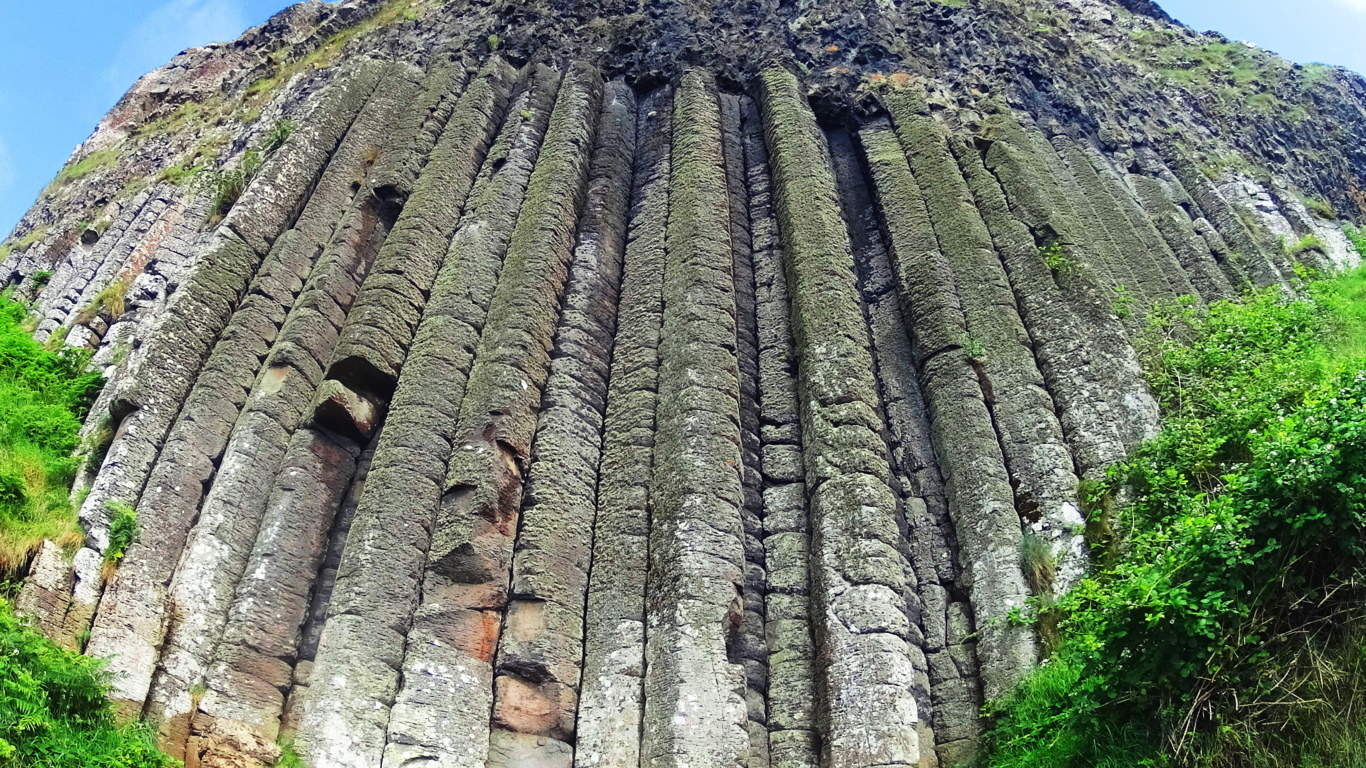
Continuing up this wonderful trail brings an endearing visual of the entire bay. It is no wonder that about 5 miles west, down the coast, sits Dunluce Castle, a gorgeous 13th century fortification built at the edge of a cliff, and practically the northern edge of Ireland. This castle was utilized and enhanced wonderfully in Game of Thrones, a well deserved compliment to the area. In its day, Dunluce must have been one of the most desired residences in all of Ireland. The grounds at Dunluce are open for walking, and it is certainly recommended to any sojourners to visit this incredible stone palace.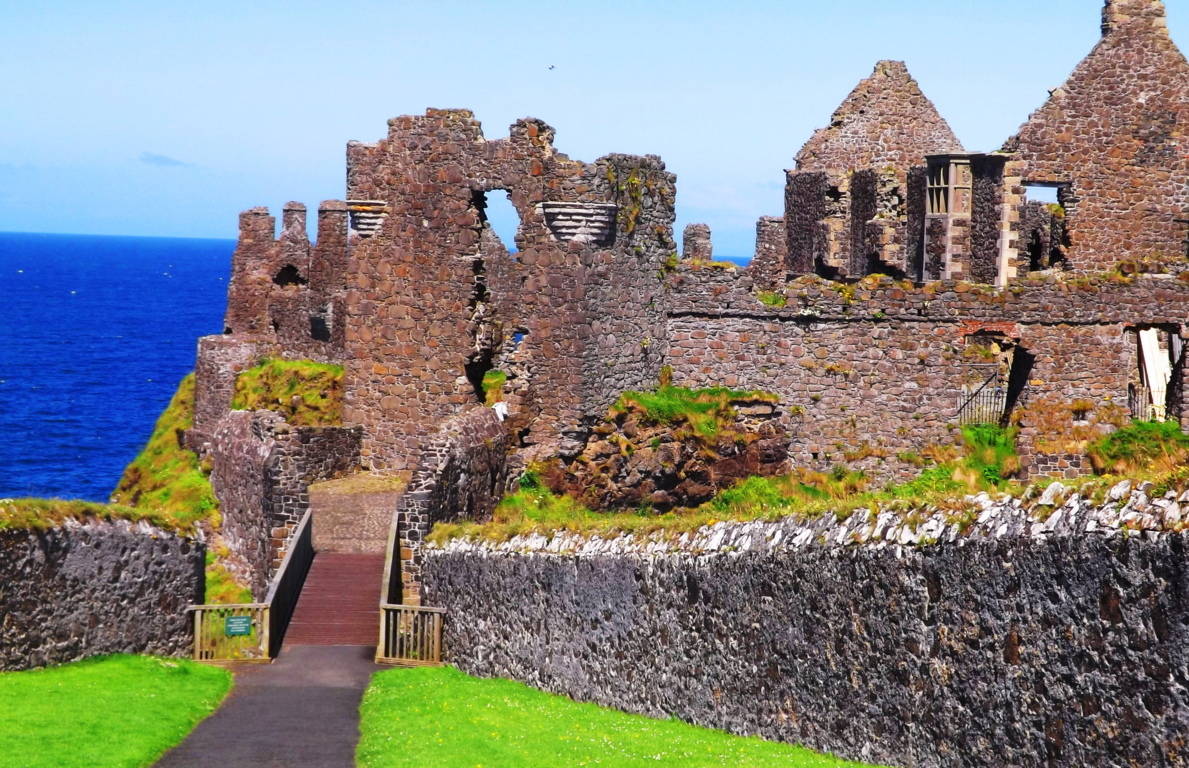 Returning to the easterly trail above the Causeway’, the elevation rises as you approach the edge of the bay. Why don’t the stones below the trail, which are much closer to any theoretical flow of lava which they say came up from the water, have hexagonals? How did the lava pass them over, and then cut into the specific stones above? Logically it just doesn’t hold up.
Returning to the easterly trail above the Causeway’, the elevation rises as you approach the edge of the bay. Why don’t the stones below the trail, which are much closer to any theoretical flow of lava which they say came up from the water, have hexagonals? How did the lava pass them over, and then cut into the specific stones above? Logically it just doesn’t hold up.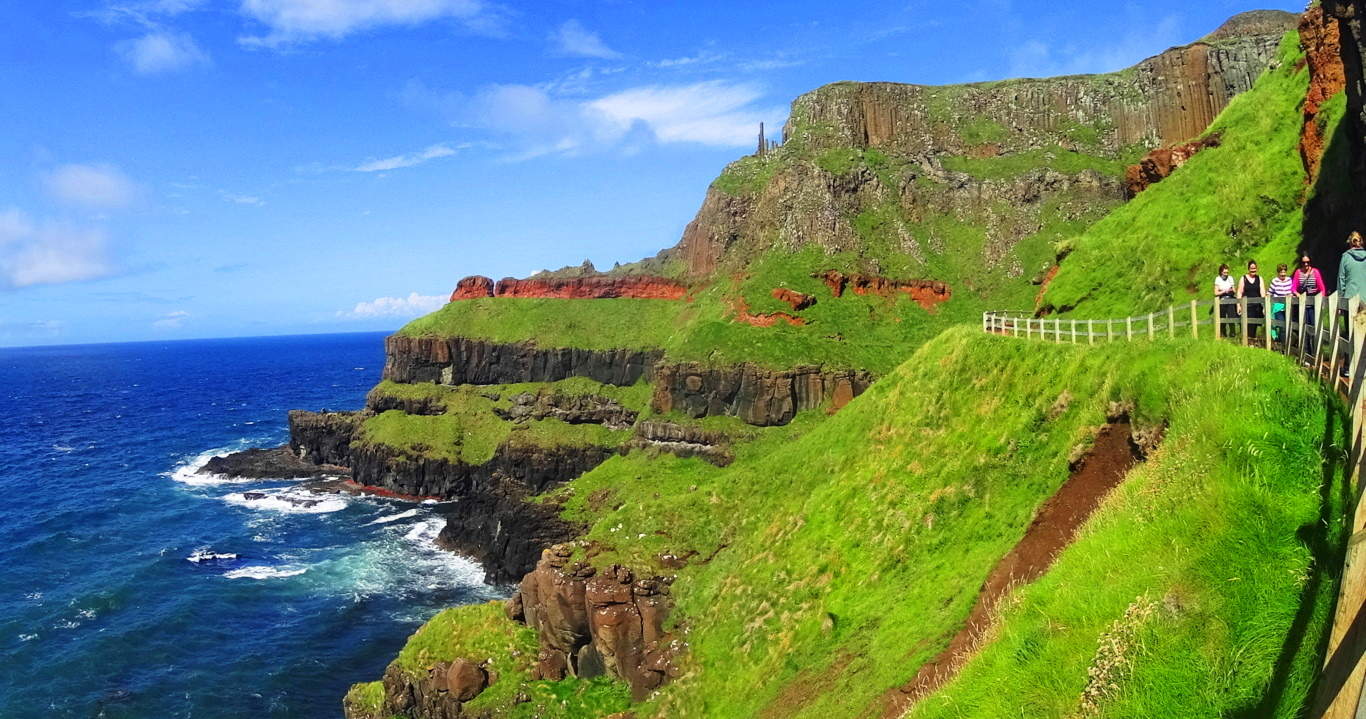 Just beyond, and above the trail, is another set of singular hexagonal stones, and in an even more specific position.
Just beyond, and above the trail, is another set of singular hexagonal stones, and in an even more specific position. 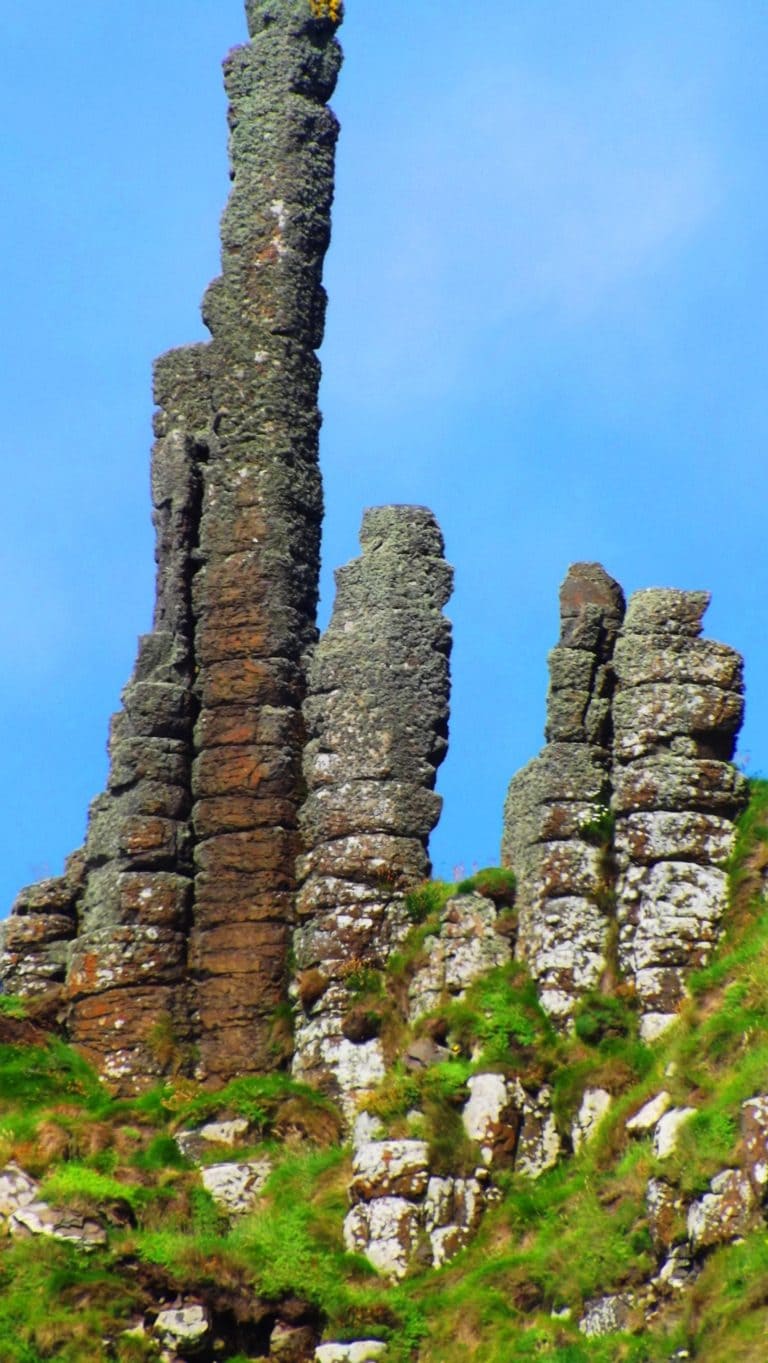 These stones mark the edge of The Giant’s Causeway, like a specific warning sign; it says someone skillful enough to create these picturesque pillars once occupied this place (Below/Left).
These stones mark the edge of The Giant’s Causeway, like a specific warning sign; it says someone skillful enough to create these picturesque pillars once occupied this place (Below/Left).
This beautiful trail bends around to the next grand cove, and up out of the coastal wall, continuing on the mainland, looping back to its start for another 1.5 miles. But the other coves do not contain the hexagonals; intact, no other coves do anywhere in Ireland, Many people simply walk back down the trail from the direction they came to get a last look at the Causeway’. Who could blame them? Passing through this place a hiker can see that there really is no logical way to explain what has taken place here. The magical aspect of hiking and trailblazing is palpable; stories about its origin have survived for century upon century. Just as the earliest Hebrew scriptures record the presence of Giants in the land, well before the tribes of mankind swept into their valleys, Ireland and England’s earliest tales are of giants. The name “Giant’s Causeway” is not without substance. It is here that Fin McCool, the most famous Giant in both Ireland and England, is said to have exacted tolls upon those wishing to enter Ireland from the north. There are stories of epic battles with other Giants from Scotland and England, and looking around the Causeway’ it is just impossible to ignore the possibility of Fin’s presence. Looking back on the entire scene would justify any fight in order to hold on to this beautiful and epic space.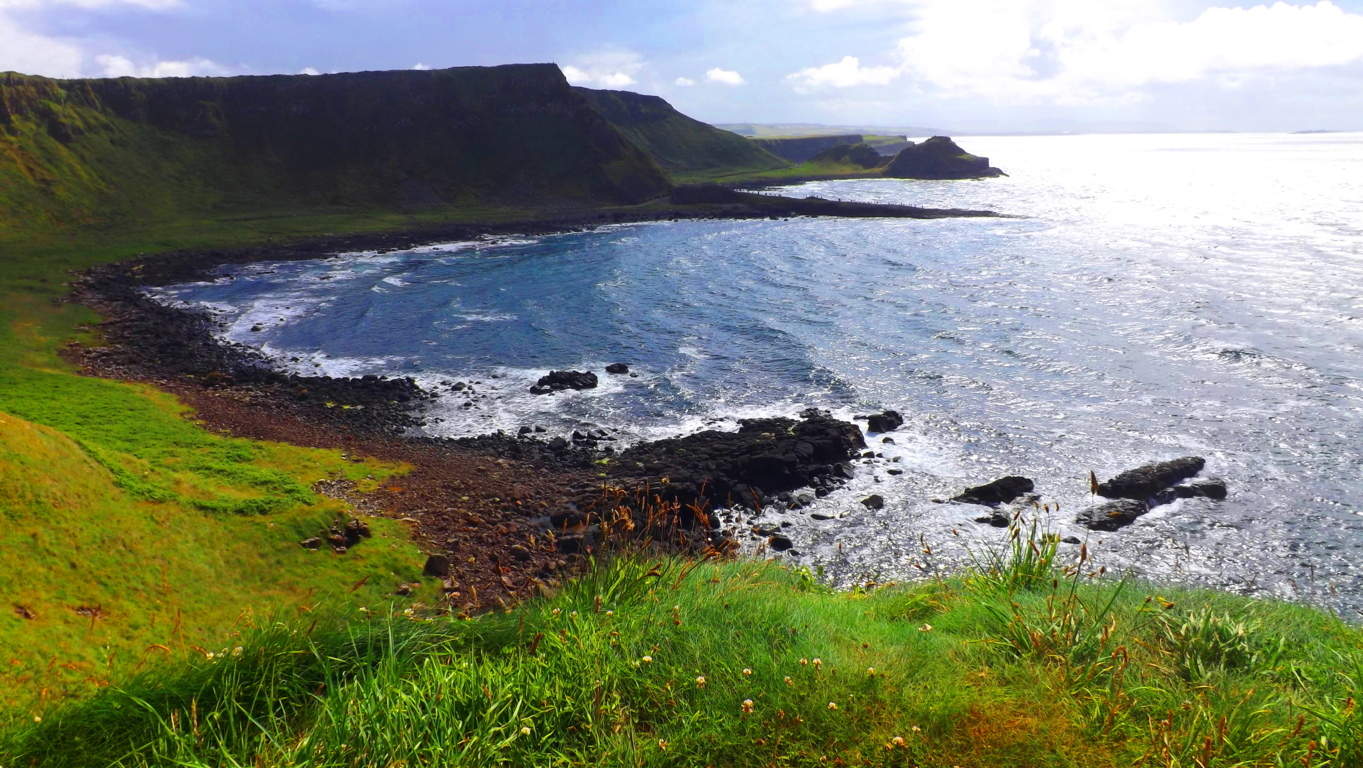 Hikers, anthropologists, story-tellers, and locals, are left to choose between stories or scientific theories, both of which stretch our imaginations, either in one direction or the other. Science seems no less ridiculous than myth, and our personal cognitive abilities are ultimately required to decipher places like this, which is a testament to its magical vibration. It would be a lot easier to dismiss the idea of Giants as ridiculous if they weren’t written about so clearly in ancient scripture, and embedded in literally every cultures deepest mythical roots. Hike the Causeway’ for yourself, it’s the only way to get just a little closer to what actually might be the case here. As a new Spring emerges, give yourself a worthy challenge and head to the beautiful northern Irish coast; it’s a “can’t miss”. And of course, may the road rise to meet you, until the cove of hexagonals greet you.
Hikers, anthropologists, story-tellers, and locals, are left to choose between stories or scientific theories, both of which stretch our imaginations, either in one direction or the other. Science seems no less ridiculous than myth, and our personal cognitive abilities are ultimately required to decipher places like this, which is a testament to its magical vibration. It would be a lot easier to dismiss the idea of Giants as ridiculous if they weren’t written about so clearly in ancient scripture, and embedded in literally every cultures deepest mythical roots. Hike the Causeway’ for yourself, it’s the only way to get just a little closer to what actually might be the case here. As a new Spring emerges, give yourself a worthy challenge and head to the beautiful northern Irish coast; it’s a “can’t miss”. And of course, may the road rise to meet you, until the cove of hexagonals greet you.